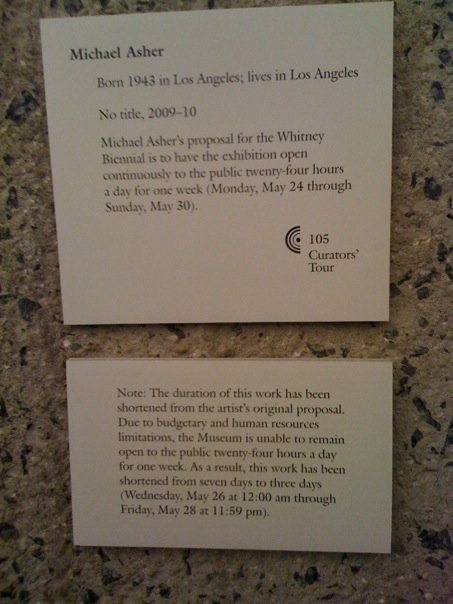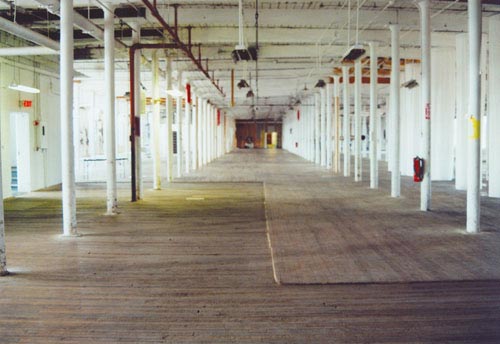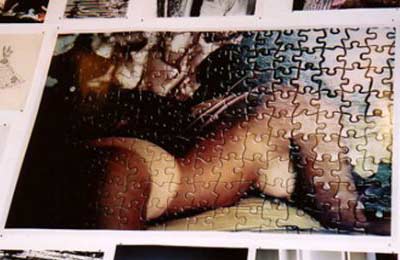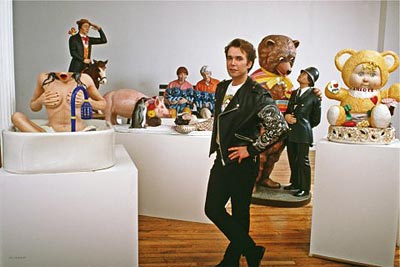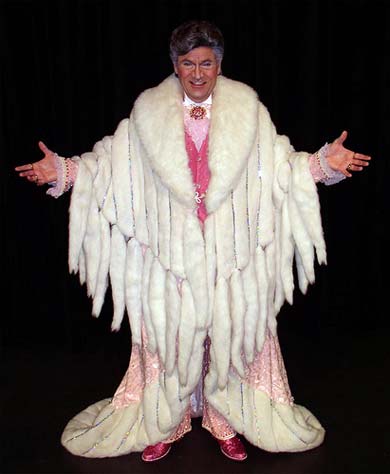art
Jesus Daily
Religious architecture and art were to medieval feudalism what advertising and commercialism are to modern capitalism: A rather effective way to build support for the status quo using aesthetics instead of argument. My claim, in short, is that Notre Dame played the same role during the Middle Ages that fashion magazines play today. Notre Dame was not an argument for feudalism, and Elle is not an argument for capitalism. But both are powerful ways to make regular people buy into the system.
If you can talk with crowds and keep your virtue
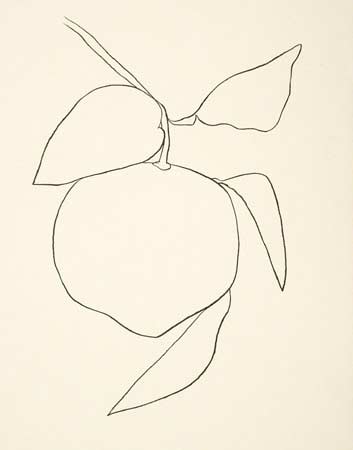
What makes a fruit “super?”
First of all, we have to define what characteristics a fruit has to have to be labeled “super.” The superfruit craze seems to have hit a tipping point in 2004, however there appear to be no clear standards as to how a fruit attains a “super” status. Marketing and exotic appeal rather than science have given select fruits a more salubrious appeal. As most health claims however, these are based on perception rather than evidence.
One thing that superfuits do have in common, however, is a high ORAC value.
The Oxygen Radical Absorbance Capacity (ORAC) assay was developed to directly test the antioxidant capacity of biological samples. There are however many different tests of antioxidant capacity that have been developed and utilized, each with various shortcomings.
drawing { Ellsworth Kelly, Tangerine, 1964-65 }
Philosophers give ideas away for free, if you think about it
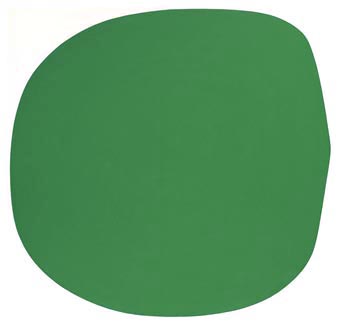
MOMA’s founding director and “intellectual creator” viewed Johns’ first solo show at Leo Castelli and telephoned MOMA curator Dorothy Miller to come right over so they could select works. They purchased Johns’ 1954 Flag, Green Target, Target with Four Faces and White Numbers (thus anointing the 28-year-old into the modernist pantheon).
{ Art Net | Continue reading }
Rauschenberg opened up the possibilities that are now being mined by contemporary con-artists such as Damien Hirst, Mike Kelley, and Jeff Koons. Rauschenberg didn’t poeticize the ordinary. He aggrandized the ordinary, he put a high-art style price tag on the ordinary.
{ The New Republic | Continue reading }
$12 million, that’s how much Damien Hirst’s famous shark sold for in 2005. …. It’s not just about the work of art; rather, the value placed on a particular work derives from how it feels to own that art. Most art dealers know that art buying is all about what tier of buyers you aspire to join, about establishing a self-identity and, yes, getting some publicity. The network of galleries and auction houses spends a lot of its time, money, and energy giving artworks just the right image. Remarkably, buyers support the process in the interest of coming out on top, rather than fighting it and trying to get the lower prices. ….
art critics don’t matter much anymore. If the magazine Art in America pays $200 for a review article, why listen to that writer? We have a much richer and generally more accessible guide to the value of art — namely the market itself. ….
Damien Hirst is now worth more than Dali, Picasso, and Warhol were at the same age, put together. The point isn’t whether, in aesthetic terms, he deserves that compensation. The question is whether this way of organizing the art market makes overall sense.
Earlier this year, hedge-fund millionaire Daniel Loeb made a sweet trade. The 43-year-old partner at Third Point LLC had purchased a rare asset in 2003. He found a buyer in January and sold it for a 500% profit, making a quick $1 million. …
Hedge-fund managers are reinventing the art of the art deal. With their sudden riches, quest for status and big houses in need of adornment, fund managers have become some of the most active buyers and sellers in the art world.
They have been buying up hundreds of millions of dollars of paintings, sculptures and pop-art installations. They have helped turn middling artists into media stars. … where others see art, many fund managers see another market ripe for trading, buying, selling and flipping. Many invest heavily in one or two artists, to build up a “position.” They promote the value of the artists, help boost their prices and sometimes later unload pieces through a tax-favorable gift or sale.
“Who makes that kind of money in the stock market?” said Sender, 38, as he swiveled round the 21 screens at his desk in New York. “In the hedge-fund business these days, you’re having a great year if you make 20 percent.”
Sender revamped his hedge fund Exis Capital Management Inc. last year, returning some investors’ money after losses in 2004 and 2006. Meanwhile, the value of his art, with works by Richard Prince, Mike Kelley and Andreas Gursky, has continued to rise, quadrupling in 10 years.
Art is now his biggest single asset — 800 works that Sender values at more than $100 million. He said he recouped most of the $25 million he spent in the past 10 years on art with the sale of about 40 pieces.
Sender is a new type of financier collector, with Steven Cohen and Daniel Loeb. Their gains on works by Prince and Martin Kippenberger aren’t just dumb luck in a boom. They apply rules for buying art, as well as stocks.
Sender tries to buy the best works of artists he admires, whose pieces also are being acquired by museums and other collectors.
{ Bloomberg | Continue reading }
When a big-name artist has a gallery show at a big-name gallery like White Cube or Gagosian, his best paintings aren’t even on public view: “The new buyer has little chance of even seeing the hot paintings, which will be kept in a small private room. What is hung in public areas is available for purchase but of lesser significance.” ….
One of the things which fascinates me about the recent run-up in contemporary art prices is that it’s meant a huge change in the way that many artists work: it’s commonplace nowadays for artists to have dozens of assistants, something which was a decidedly unusual and controversial practice back in the days of Warhol. With prices for new works regularly breaking into seven figures, art has become bigger and more polished; it often uses much more expensive materials and can draw on resources which would have been unthinkable 15 years ago.
{ Portfolio | Continue reading }
To Mr. Galenson markets are what make the 20th century completely different from other eras for art. In earlier periods artists created works for rich patrons generally in the court or the church, which functioned as a monopoly. Only in the 20th century did art enter the marketplace and become a commodity, like a stick of butter or an Hermès bag. In this system, he said, breaking the rules became the most valued attribute. The greatest rewards went to conceptual innovators who frequently changed styles and invented genres. For the first time the idea behind the work of art became more important than the physical object itself.
artwork { Ellsworth Kelly }
Lucy is an artist. Lucy paints portraits of Barbara Streisand.
This paper is about what happens when we consciously look at paintings, or to be more accurate what I observe happening in my own consciousness when looking at a particular painting. I will suggest, but not assert, that what occurs in my own consciousness bears some relation to what occurs in the conscious minds of others when confronted with a similar object.
{ Consciousness, Literature and the Arts, August 2009 | The Conscious Act of Looking at a Painting, by Robert Pepperell | Continue reading | And: The Intentional-Attributive Definition of Art, by Alexey Aliev }
Anna Wintour gets cold, in Vogue with your skin out
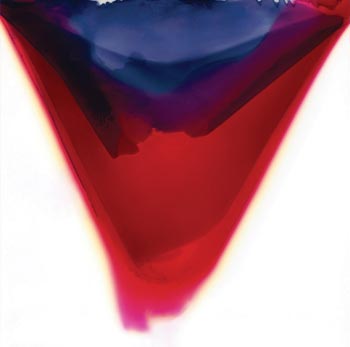
Witter: Are you moving more into the mainstream? Have you sold out to commercialism?
Grayson Perry: In this game you make more money not selling out to the mainstream. I’m not scared of being popular though.
{ Grayson Perry, cross-dressing ceramicist | Times | Continue reading }
artwork { John Guerrero }
Always thinking that just behind some narrow door in all of his favorite bars, men in red woolen shirts are getting incredible kicks from things he’ll never know.
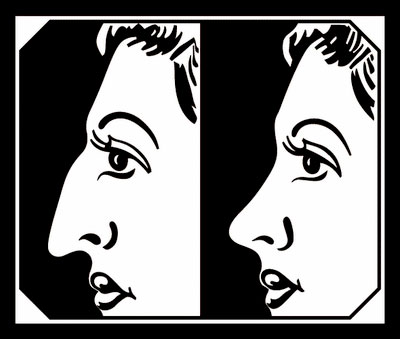
Can a clean smell make you a better person?
That’s the provocative suggestion of a recent study in the journal Psychological Science. A team of researchers found that when people were in a room recently spritzed with a citrus-scented cleanser, they behaved more fairly when playing a classic trust game. In another experiment, the smell of cleanser made subjects more likely to volunteer for a charity.
The findings suggest that simply smelling something clean makes people clean up their behavior - that a smell can provoke a mental leap between cleanliness and morality, making people think differently about the world around them. The authors even suggested that clean smells could be employed as a tool to influence how people act.
The idea that a smell can affect something as complex as ethical behavior seems surprising, not least because smell has long been seen as a “lower” sense, playing on our emotions and instincts while our reason and judgment operate on another plane. But research increasingly shows that smell doesn’t just affect how we feel: It affects how we think, in ways that are just beginning to be understood.
{ The Boston Globe | Continue reading }
One of the works that helps visualize the breakthrough is a painting done in 1961, which consists in a greatly enlarged version of a simple black-and-white advertisement of the kind that appears in side columns and back pages of cheap newspapers. It advertised the services of a plastic surgeon, and showed two profiles of the same woman, before and after an operation on her nose.
artwork { Andy Warhol, Before and After, 1961 }
And because of a courageous little girl named Penny, the world’s largest diamond, the Devil’s Eye, is now at the Smithsonian Institute
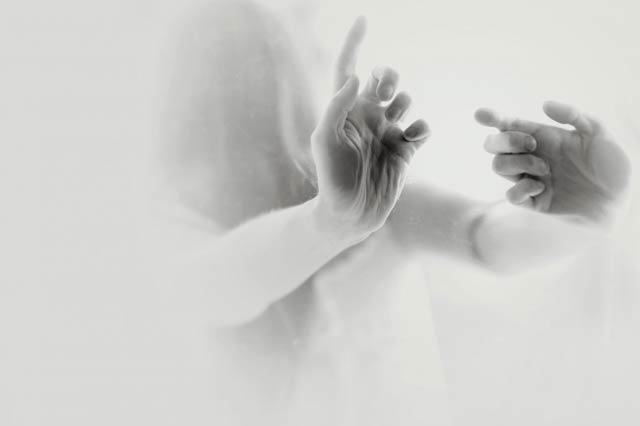
The human form, disrobed and displayed in all its glory, is arguably the most enduring motif in the history of Western art. Museums dedicated to art both ancient and modern are filled with nudes rendered every which way: painted, chiseled, molded, sketched and photographed. They’re just usually not living and breathing. But come March 14, New York’s Museum of Modern Art will host daily performances of five seminal works by Marina Abramović, three of which feature performers in the altogether. In Imponderabilia (1977), two players stand opposite each other, au naturel, in a narrow doorway. Visitors must brush past them to enter the exhibition—an early, if awkward, example of interactive art.
“This is America!” the Yugoslavian-born Abramović trills jovially in her heavily accented English, on a rainy fall day in New York, as she considers the potentially embarrassing encounter in what will be the first live exhibition of nudes in the museum’s history. “Is going to be riots! I have so many meetings with the security of MoMA and how we’re going to deal with things.”
In all fairness, yes, Americans have a more delicate relationship with nakedness than Europeans, but Abramović acknowledges that when she and her former collaborator and lover, Ulay, performed the piece at a museum in Bologna, Italy, the police showed up six hours into it, asked to see their passports (which they obviously didn’t have on them) and promptly shut down the performance. This time around, regulations mandate that MoMA provide a second route into the exhibition—one with a wider opening to allow for wheelchairs—a measure Abramović finds understandable but disappointing. “I hate that alternative because in the original piece there was no alternative—you go here,” she says, seated in her midtown office as she points to a photograph of Ulay and herself, face-to-face in the passageway, while a man turned slightly sideways tries to negotiate the cramped space. Even so, Abramović has come up with one small tweak: Though the original conceit paired a man and a woman, she now plans to mix up the couples taking turns performing Imponderabilia so that some are same-sex.
At 64, Abramović is the doyenne of performance art, a true believer who has literally risked her life more than once in fealty to her work. Decades after her peers segued exclusively into other—typically more lucrative—art forms, she is still constructing new performances, though she does dabble in other mediums. For the MoMA retrospective, the 36 hired players will rotate every two and a half hours to allow for breaks, while Abramović herself will perform a new work nonstop during museum hours for the duration of the exhibition. That’s seven and a half hours a day, five days a week; 10 hours on Friday. For three months. “The idea is that we are there before the museum opens, and we are there when the museum closes,” she says. “The attitude is the same as toward a painting—the performance is always there. It’s never been done that way for three months, ever, in history.”
{ W | Continue reading | More: NY Times | NY Times video }
related { Nude Statues Installed On Rooftops In NYC }
photo { Rebekka Guðleifsdóttir }
My sin. My soul. Lo. Lee. Tah.
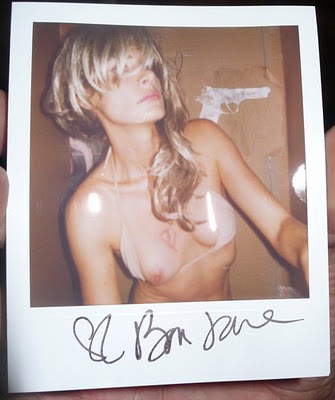
{ In performance piece ‘object if i’, artist Bon Jane invited street-side passerby’s to photograph her inside a cardboard box in various stages of undress and self-adornment. Held in NY on 23rd street at 10th avenue october 22nd 2009 from 6-8pm | Bon Jane | more }
‘The secret to creativity is knowing how to hide your sources.’ –Albert Einstein
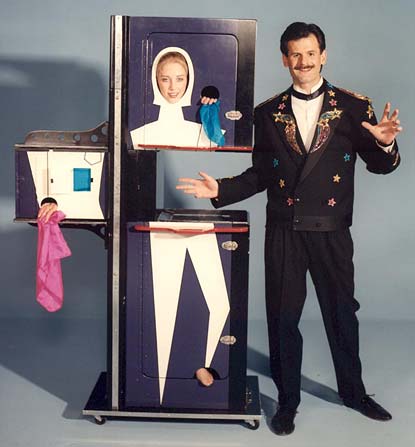
Magic Show, a newly published catalogue to accompany a travelling exhibition of the same name, explores the relationship between art and magic. (…)
Many of the 24 contemporary artists featured (in both the show and the book) borrow directly from iconic magic tricks. Sinta Werner’s “Disjunction” plays on the idea of a disappearing act, but in this case it is the viewer who vanishes; the site-specific installation creates the effect of approaching a mirror without a reflection. Susan Hiller’s “Homage to Yves Klein” is a more upbeat take on his rather dark photo-montage, “Leap into the Void” (1960). The result is a charming play on the trick of levitation.
In other works, artists challenge the viewer’s ability to suspend disbelief—a crucial requirement of magic-show audiences.
related { In the Zig-Zag illusion, a magician divides his or her assistant into thirds }
What’s the trouble? Well, all this white stuff on my sleeve, is LSD…
Mr. Koons has collected since the beginning of his life as a professional artist, even before he could afford to pay for work. (…)
By the late 1980s, as his star and his bank balance rose precipitously, he began to collect high-end work by artists he loved, like Lichtenstein, but he was forced to sell a lot of it during an acrimonious divorce and custody battle with his first wife, the Italian porn star and politician Ilona Staller. (…)
But as his fortunes roared back in recent years, he began pouring a significant amount of his wealth into building a collection, joining high-profile contemporary artists like Damien Hirst and John Currin in concentrating heavily on old masters and 19th-century works. (…)
Even by the standards of the art world, where language about art strays easily into deep and enigmatic waters, Mr. Koons’s way of explaining his own work is hard to take seriously, though he has always seemed to take it that way. (…) In a profile of Mr. Koons in The New Yorker in 2007 Calvin Tomkins observed that “it is possible to argue that no real connection exists between Koons’s work and what he says about it.”
‘I think the market is bigger than anyone knows. I love art and this proves I’m not alone and the future looks great for everyone!’ –Damien Hirst
The New Museum’s controversial show of work from billionaire collector Dakis Joannou’s art trove now has a curious new name and a list of artists courtesy of its special guest curator, the artist Jeff Koons. The museum announced yesterday that the show, entitled “Skin Fruit,” would include more than 100 works by 50 artists, including one by Koons.
The artist list stretches from contemporary art stalwarts like Paul McCarthy, Richard Prince, and Franz West to younger figures like Dan Colen, Andro Wekua, and Nate Lowman. New versions of work by Charles Ray, Jenny Holzer, and Robert Cuoghi will also be on display for the first time. (…)
The exhibition is the first edition in a planned series called “The Imaginary Museum” at the New Museum, which will show work from leading private collections from around the world.
{ ArtInfo | Continue reading | Artwork pics | Skin Fruit: Selections from the Dakis Joannou Collection, March 3, 2010 until June6, 2010, New Museum, NYC | Press realease }
An article described concerns in the art world over the propriety of a coming show at the New Museum that will feature the private collection of a museum trustee, Dakis Joannou, and be curated by Jeff Koons. Mr. Koons is an artist whom Mr. Joannou collects extensively, and the article noted that critics of the museum consider it to be enmeshed in what can seem like a dizzyingly insular circle of art world insiders.
Here is an example:
Right now, the museum is devoted to a show of works by Urs Fischer, an inventive Swiss sculptor whose work is owned by Mr. Joannou. Mr. Fischer is represented by the gallery owner Gavin Brown, who also represents the painter Elizabeth Peyton, who had a solo show at the New Museum last year. That was curated by Laura Hoptman, whose husband, Verne Dawson, belongs to Mr. Brown’s stable of artists, too.
{ NY Times, 2009 | Continue reading }
Jeff Koons is scanning his phone machine, hoping to hear a message from an executive at a major Wall Street investment firm. Earlier in the day, a waitress in a Manhattan restaurant had inadvertently handed the executive’s corporate credit card to Koons and Koons’s card to the executive. If the pinstriper could see Koons—street casual in a black polka-dot shirt and fraying black jeans—he might be a bit concerned. But in this case appearances are especially deceptive; unless the exec has been trading on inside information, it’s almost certain that Koons has had the more lucrative first quarter of ‘89. At 34, he is by most estimates the hottest young artist in America—and one of the richest. He is expected to gross about $2.5 million from his most recent show, which was staged—with typical Koons flair—in Chicago, New York City and Cologne, West Germany. Simultaneously.
‘Joy is man’s passage from a less to a greater perfection.’ –Spinoza
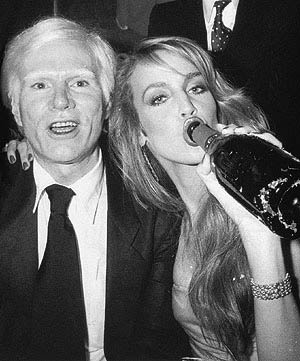
Sometimes you hear a word for the first time and think: “Of course.” How better to describe Paris Hilton than as a “celebutante” or the frequent tabloid target Alec Baldwin as “the bloviator”? (Thanks, New York Post!)
Now make room for “prehab.”
Prehab made its debut on Feb. 23, the handiwork of GlasgowRose, a commenter on Gawker, after a publicist for Charlie Sheen announced that the star of “Two and a Half Men” was entering rehab as a “preventative measure.”
{ NY Times | Continue reading }
A respected scientist set out to determine which drugs are actually the most dangerous — and discovered that the answers are, well, awkward. (…)
The list, printed as a chart with the unassuming title “Mean Harm Scores for 20 Substances,” ranked a set of common drugs, both legal and illegal, in order of their harmfulness - how addictive they were, how physically damaging, and how much they threatened society. Many drug specialists now consider it one of the most objective sources available on the actual harmfulness of different substances.
That ranking showed, with numbers, what Nutt was fired for saying out loud: Overall, alcohol is far worse than many illegal drugs. So is tobacco. Smoking pot is less harmful than drinking, and LSD is less damaging yet.
{ The Boston Globe | Continue reading }
Andy was one of my best friends. We hung out together several nights a week for over ten years. We used to go to Studio 54 — an amazing place.
{ Jerry Hall interview | Index magazine | Continue reading }
photo { Andy Warhol and Jerry Hall, Studio 54, NYC, late 70s }
Man, I’ll try just about anything, but I’d never in hell touch a pineal gland.
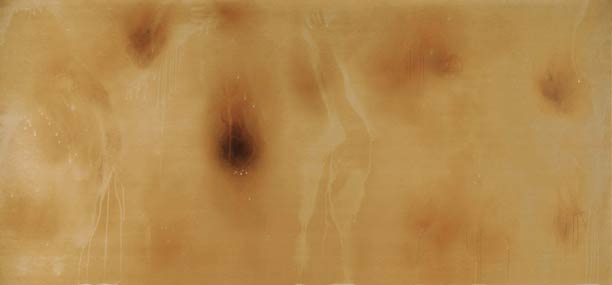
Scientists have proposed that the way food smells could possibly be related to the sounds we hear when we consume them.
They note that there could be a connection between smell and sound, a hybrid sense they call “smound.”
artwork { Yves Klein, F 88, 1961 }
‘We participate in a tragedy; at a comedy we only look.’ –Aldous Huxley
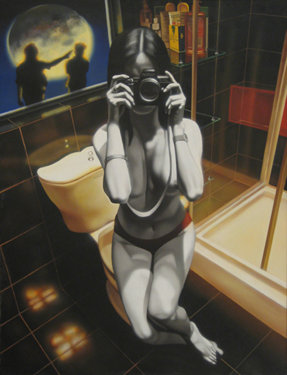
The average American, according to the Clean Air Council, creates 4.6 pounds of trash per day. Much of the trash is non-biodegradable, meaning that it will accumulate, and not necessarily where we’d like it to, if left unchecked.
Californians Against Waste estimates that Americans consume some 84 billion plastic bags a year (the product of roughly 12 million barrels of oil)—many of which, along with many other forms of terrestrial waste, are collecting in an area in the northern Pacific Ocean known as the Eastern Garbage Patch, a floating mass now more than twice the size of Texas.
The mandate of consumerism requires a certain amnesia about what we waste: It encourages us to forget the old and buy the new. Confronting the physical reality of our waste, however, might force a reexamination of our relationship to rampant consumerism.
The sudden interest in found-object art at the recent exhibitions seemed to suggest that the art world was prepared to encourage precisely that sort of reexamination —or so I thought before I actually attended them. (…)
What, however, is one to make of Richard Prince’s pieces, around the corner from Arman’s? The photographs are of Marlboro ads, carefully cropped to remove any ad copy. Prince argues that the iconic Marlboro cowboy, when removed from its original advertising context, encapsulates a certain segment of the American mythos. Perhaps, but the images never are removed from their advertising context—Marlboro’s images are enough of a cultural mainstay that we’re perfectly capable of identifying them without the Marlboro logo. The brand is far stronger than Prince’s effort at artistic dislocation. The primary effect of Prince’s appropriation, rather than rescuing our detritus from obscurity, is merely to extend the reach of advertising into the gallery and the museum. One can hardly claim this is a radical political act, certainly not one that runs counter to consumerism.
somehow related { Damien Hirst, Appropriation | Wikipedia }
painting { Zhong Biao, Dark Lens, 2002 }
There’ll be someone else to hold you
Has everybody forgotten that the arts are recession proof? Yes, of course, revenues shrink, contributions dry up, and expenses continue to rise. (…)
But the arts—the play of the imagination, the need for this parallel universe with its dream logic and its moral reverberations—are not affected by shifts in the housing market or the Dow.
The value of a painting has never been established at auction. The power of a novel has never been determined by the advance the author happened to receive or by the number of copies that eventually sold. The greatness of a theatrical production has nothing to do with how many people attend. Dancers who can barely make their rent go on stage and give opulent performances. Poets, with nothing but a pencil and a piece of paper, erect imperishable kingdoms. And there are millionaires who chose to live with the barebones beauty of a Mondrian or a Morandi.
‘The beginning is half of the whole.’ –Aristotle

{ Hélio Oiticica, Sêco 14, 1957 | gouache on board | Galerie Lelong, 528 W. 26th Street, NYC | until February 6, 2010 }
‘There’s hell, there’s darkness, there’s the sulphurous pit, burning, scalding, stench, consumption; fie, fie, fie! pah, pah!’ —Shakespeare

Abstract painting is nearing its centenary. Although what exactly abstraction is, who first achieved it, and when and where, are questions open to interpretation, the best art-historical thinking dates its inception to around 1912, when Wassily Kandinsky, Kazimir Malevich, Robert Delaunay, Piet Mondrian and Arthur Dove quite separately made their breakthroughs across two continents. (…)
It would be easy to make the argument that abstraction has long since settled into its comfortable dotage–that it has become an art choking on good taste and mannered reticence. On this view, abstraction was deposed by movements of the 1960s such as Pop Art, with its rehabilitation of vernacular imagery and its immersion in demotic culture; Conceptual Art, with its emphasis on language and critical context; and even Minimalism, which (despite its inheritance from the Constructivist strain within abstraction) laid such great stress on what its foremost detractor decried as mere “objecthood” that a boundary was fatally breached between art and everyday things.
artwork { Mark Rothko, No. 14, 1960 }

